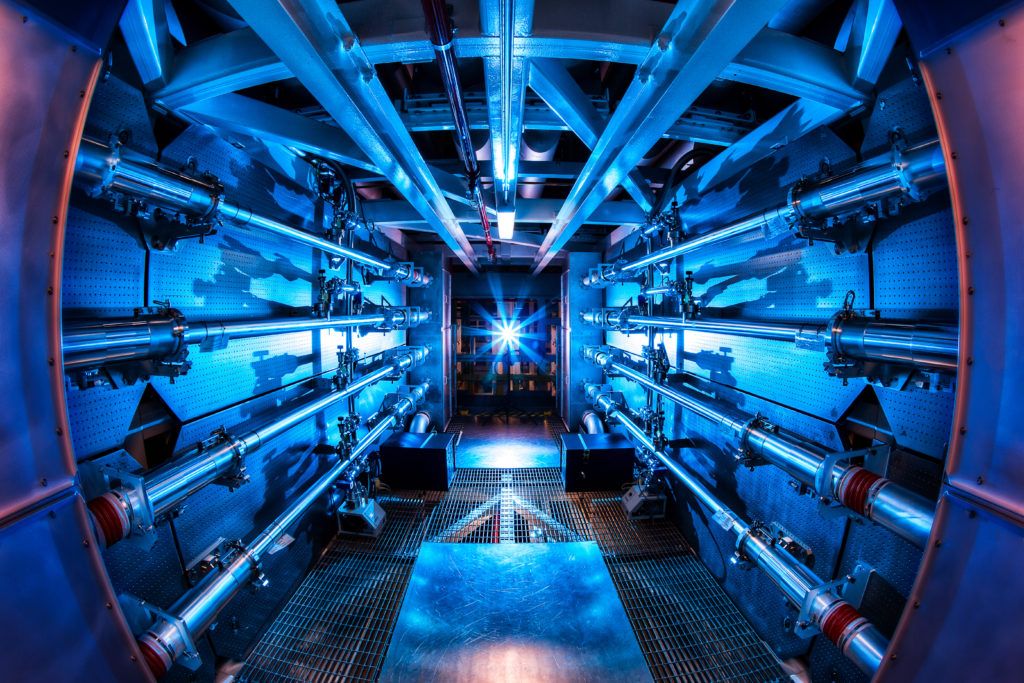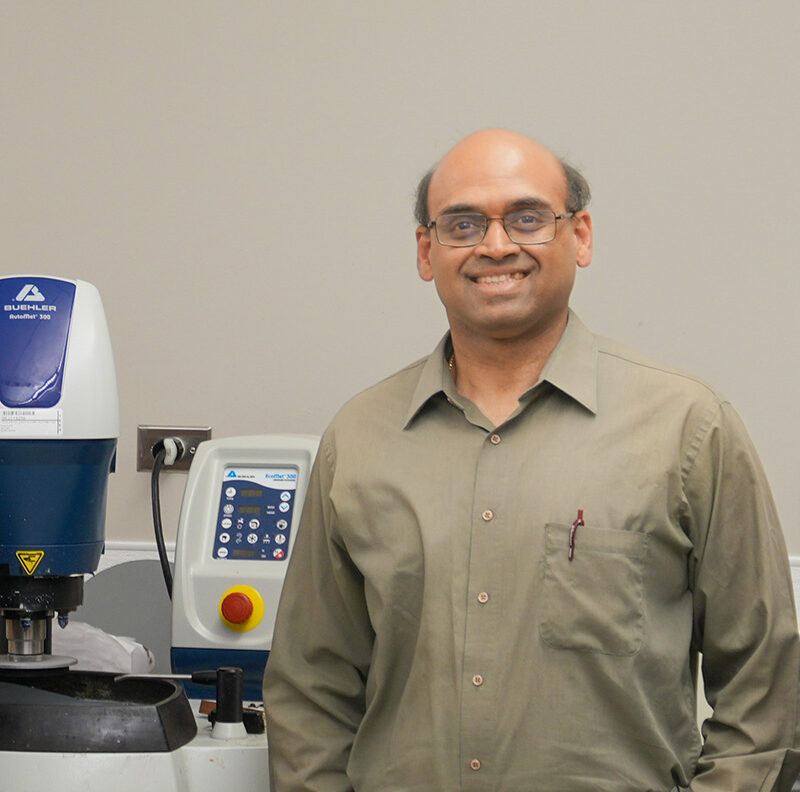Phenomenal Cosmic Power! Itty-Bitty Living Space
Texas A&M researchers are examining ways to improve components for nuclear fusion, a genie in a bottle that may grant humanity’s wish for endless energy.

Nuclear fusion is the process by which stars — including our own sun — are powered.
The world is using more and more power — the demand for electricity is increasing at about twice the rate of overall energy use. And it’s only going to grow as the global population is expected to increase from 8 billion in 2024 to around 9.8 billion by 2050.
At the Lawrence Livermore National Laboratory (LLNL) in California in 2022, scientists fired lasers at a tiny capsule the size of a peppercorn, inside of which was fuel that when heated with the lasers generated the energy of a star. The amount of energy produced as a result of this controlled fusion reaction was a net gain, meaning it created more fusion energy than laser energy delivered. The result of the experiment, known as “fusion ignition,” proved what was first theorized in the 1960s by LLNL scientists led by physicist John Nuckolls.
Decades later, the experiment — the work of more than 1,300 researchers from 44 institutions around the world — proved Nuckolls right, opening new possibilities for power generation when it will be needed most.

The Texas A&M team was tapped to improve the process for precision polishing the tiny ablator capsule — a spherical shell around two millimeters in diameter.
Star Power
Nuclear fusion is the process by which stars — including our own sun — are powered.
During a fusion reaction, two light atomic nuclei combine to form a heavier nucleus, releasing a large amount of energy in the process. How we use that energy can vary; for example, hydrogen bombs explode as a result of uncontrolled nuclear fusion.
But when that reaction is controlled, the extremely hot plasma (charged particles) is confined inertially thereby allowing fusion reactions to occur for a sustained period. Scientists used this laser-driven inertial confinement fusion (ICF) mechanism at the LLNL facility, which concentrated 192 powerful laser beams to ignite a mixture of hydrogen isotopes, deuterium and tritium, contained within the capsule to create the fusion reaction with a net gain.
Nuclear fusion’s energy yield is far beyond any other source: just 1 gram of fuel can generate the equivalent of 8 tons of oil in fusion power — 8 million times greater.
The Texas A&M team, led by Dr. Satish T.S. Bukkapatnam, along with researchers at Georgia Tech, were tapped by LLNL to tackle a key challenge: to improve the process for precision polishing the tiny ablator capsule — a spherical shell just around two millimeters in diameter — for creating an ultra-smooth surface using advanced sensor and machine learning technology. Even the smallest defect could cause the reaction to sub-perform.
“Creating a clean energy source is the dream we are all striving for,” said Bukkapatnam, Regents Professor of industrial and systems engineering and a former director of the Texas A&M Engineering Experiment Station’s Institute for Manufacturing Systems. He has stepped out of the director position over the past year to serve as a program director of the Advanced Manufacturing Program at the National Science Foundation in the Washington, D.C. area. He has been working with LLNL National Ignition Facility researchers since spring of 2019.
Bukkapatnam explains that a significant portion of the time and effort spent making the capsules is in polishing their surfaces and measuring their quality during and after polishing. His team devised an innovative system utilizing sensors to collect data during the polishing process, and AI to detect defects in real time. This innovation is seeking to reduce polishing time by over 30% or more while ensuring a surface free of imperfections.
“The Texas A&M team has been well recognized to be at the forefront of the development and deployment of state-of-the-art sensor and measurement technology in conjunction with specialized deep learning algorithms for advancing manufacturing process,” said Michael Stadermann, LLNL program manager. “Using this knowledge, they provide valuable day-to-day guidance for the direction of the ongoing joint research so that science being studied is directly applicable and has maximum relevance to advancing the quality and throughput of the surface quality of the capsules.”

A color-enhanced image of the inside of a preamplifier support structure at the National Ignition Facility.
Go For Launch…?
The science works — let’s go fusion! Well, let’s not get ahead of ourselves, Bukkapatnam cautions. Practically speaking, we could be a decade or more away from being able to use it as source of sustainable energy.
“I wish I could be very optimistic on this, but I’m very realistic because there are lot of challenges to surmount in future,” he said. “What keeps us going are the promises the technology has shown. We need major practical breakthroughs, but the science is mostly proven.”

Dr. Satish T.S. Bukkapatnam
He also points to a number of “positives” that have occurred since the initial LLNL experiment, including that the energy output from the several subsequent experiments has increased significantly.
“Since 2022, when we had just over three megajoules of energy output, the amount has increased to over five,” he said. “And LLNL is trying to go beyond that, even 10.”
Additionally, he noted that the project was initially started at the lab level but was later morphed into a Laboratory Directed Research and Development (LDRD) project, which LLNL describes as its “single most important resource for fostering excellent science and technology for today’s needs and tomorrow’s challenges.”
As the project continues, this research team will examine different sources of anomalies, as well as ways to produce high-quality fuel shells more efficiently.
He also pointed to the Aggie graduate students who have worked on the fusion project, some of whom have graduated and moved on to positions in industry and at the National Labs. And the team’s work has received multiple recognitions and awards, including from the Society of Manufacturing Engineers and the American Society of Mechanical Engineers.
“We have a continuous stream of students training as we are working on this project,” he said. “At the end of the day, the most important product that comes out of Texas A&M is knowledge-bearing students.” Last month, The Texas A&M University System strengthened its commitment to nuclear power by offering land near the Texas A&M campus to four nuclear reactor companies so they can build the latest small modular reactors (SMRs). These types of reactors use nuclear fission, which splits a large atom into smaller atoms, releasing energy. Read more about this project here.
Texas A&M University was named one of the World’s Most Innovative Companies for 2025 by Fast Company Magazine. The university is ranked by the Wall Street Journal as the best university in Texas and No. 1 in the SEC. Texas A&M was recently recognized for having the highest return on investment for bachelor’s degrees among public universities in Texas, according to The Foundation for Research on Equal Opportunity. Views of Texas A&M University video content on YouTube grew from 311,000 in 2023 to over 30 million in 2024 (+9,360%), propelling Texas A&M to be named the most recognized university in the state of Texas and No. 6 among all U.S. public universities in the latest Global University Visibility (GUV) rankings compiled by higher education research and consulting firm American Caldwell. U.S. News and World Report recognized the university’s biological and agricultural engineering program as No. 1 in the nation, and for leading the nation in engineering research expenditures.
